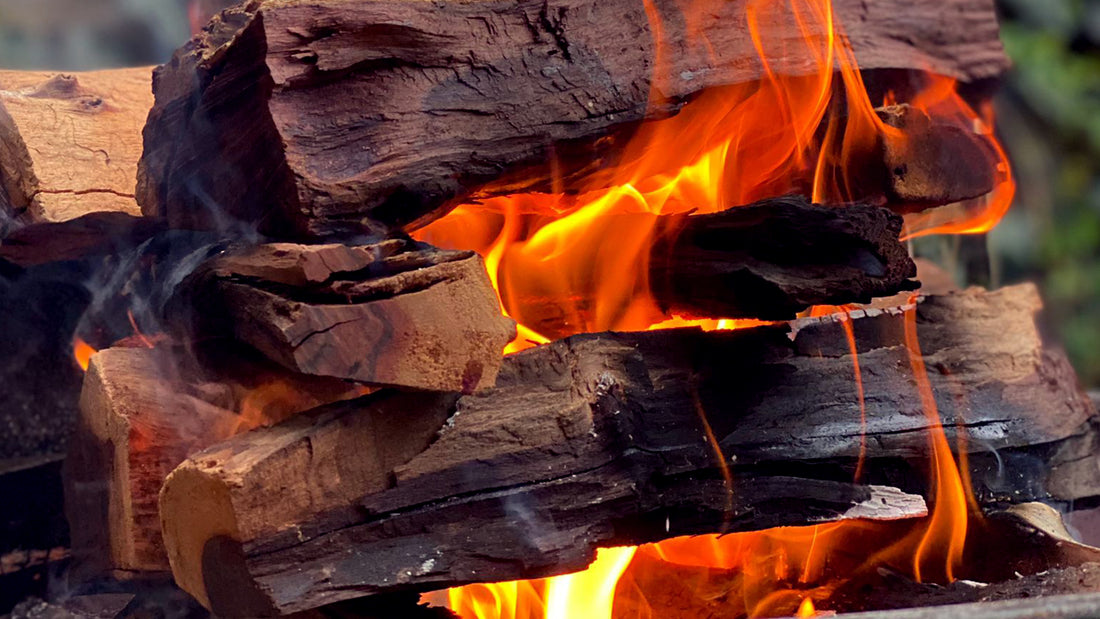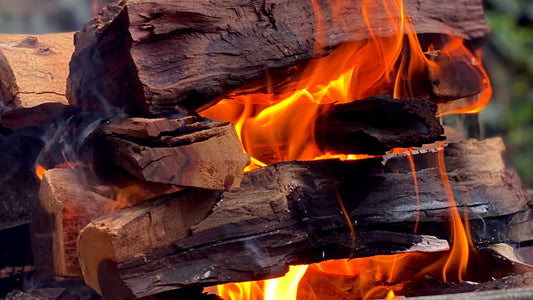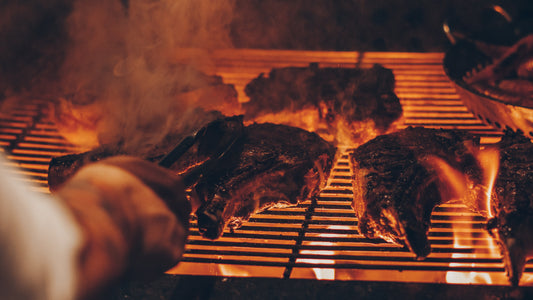If you buy firewood frequently you'll notice on website listings that wood resellers might mention the calorific value of their wood. They may mention a certain type of wood has a noteworthy calorific value that is higher than normal.
You may be mislead in thinking that this out of context property of wood is important in choosing your wood, however there is more to the story than you might think.
Firstly, how do we measure the energy output of wood?
We measure the energy of wood-fuel in much the same way we measure how many calories are in food items. By burning them inside an apparatus called a calorimeter. In simple terms, the fuel burns below a vessel of water and the temperature of the water is measured once the fuel source has completely combusted. Some complicated math is done to arrive at the number we see as calorific value.
Ok, which wood has the highest calorific value using this test?
Here is a list of the approximate calorific values (in megajoules per kilogram) for several common types of wood...
Tell me if you notice anything:
- Oak: 19.2
- Beech: 19.0
- Birch: 18.0
- Ash: 19.0
- Pine: 16.5
- Douglas Fir: 18.3
- Cedar: 17.8
- Eucalyptus: 19.4
- Hickory: 21.1
- Cherry: 17.6
- Maple: 18.6
- Mopane: 28.9
- Poplar: 13.9
- Willow: 15.0
- Apple: 17.1
- Elm: 17.0
- Spruce: 15.5
- Alder: 18.2
- Walnut: 20.0
Although Mopane "Ironwood" has the highest calorific or energy value per kg...I hope you spotted that most woods are indeed quite similar. In-fact calorific value is not a great differentiating factor to look at in isolation when choosing wood for your log-burner, pizza oven or BBQ's.
So what differentiating factor/s do you need to look for If you are looking for real "premium" firewood that burns hotter for longer? You really only need to take into consideration one factor. Density.
But it's not easy to see. Most firewood sellers package their wood by volume which makes it impossible to compare in the same way you might compare a tool made of steal one made of plastic.
How is wood density or hardness calculated?
Wood hardness is represented by a number, either in pounds of force or newtons. It is the amount of pounds-force (lbf) or newtons (N) required to imbed a .444″ (11.28 mm) diameter steel ball into the wood to half the ball’s diameter using a hydraulic press of sorts. This process is called the "janka hardness" test.
For reference the janka hardness of:
Mopane Ironwood: 15,060 N
VS
Alder: 2,890 N
Cedar: 2,940 N
Sweet Chestnut: 3,010 N
Oak: 4,980 N
Silver Birch: 5,360 N
Beech: 6,460 N
Ash: 6,580 N
Now, by looking at the most important factor, density, you can see that various woods are more dramatically different than some sellers would have you believe, and by quoting calorific value or calling a product "Premium" are reductive marketing terms. If you aren't sure weight is a good indication of hardness, although moisture will increase weight so weight isn't the same as density but it will give you a good indication.
Yes, their are other factors to consider, like the size of the logs and amount you use at the same time ie: the volume of your wood stack. Using bigger logs and packing them close together is going to limit the oxygen available to your fire and increase or slow your burn time, great for those long cold winter nights. However if you're having a braai/ BBQ and want quick coals to cook on you may want to use smaller logs in a log cabin formation to increase airflow and break down the wood into hot coals a lot faster.
I'm not neglecting the fact that different woods serve different purposes. ie: Soft wood is great for kindling and to start a fire with. I'm not asserting one is "better" than another, just very different. So if it's more heat and a longer burn you are after then something like the super dense Mopane wood is going to be your best bet.
The information I provided on the calorific values of different types of wood comes from a variety of sources, including:
- Forestry Commission, UK
- US Forest Service
- Wood Heat Organization, Canada
- Wood Energy Technical Training (WETT), Canada
- Wood Fuel Handbook, Biomass Energy Centre, UK
I used a range of sources to provide a comprehensive list of approximate values, as there can be some variation in reported values due to factors such as differences in wood quality and measurement methods, but I've have supplied accurate measurements to the best of my knowledge and ability.
Happy burning,
Chuck



